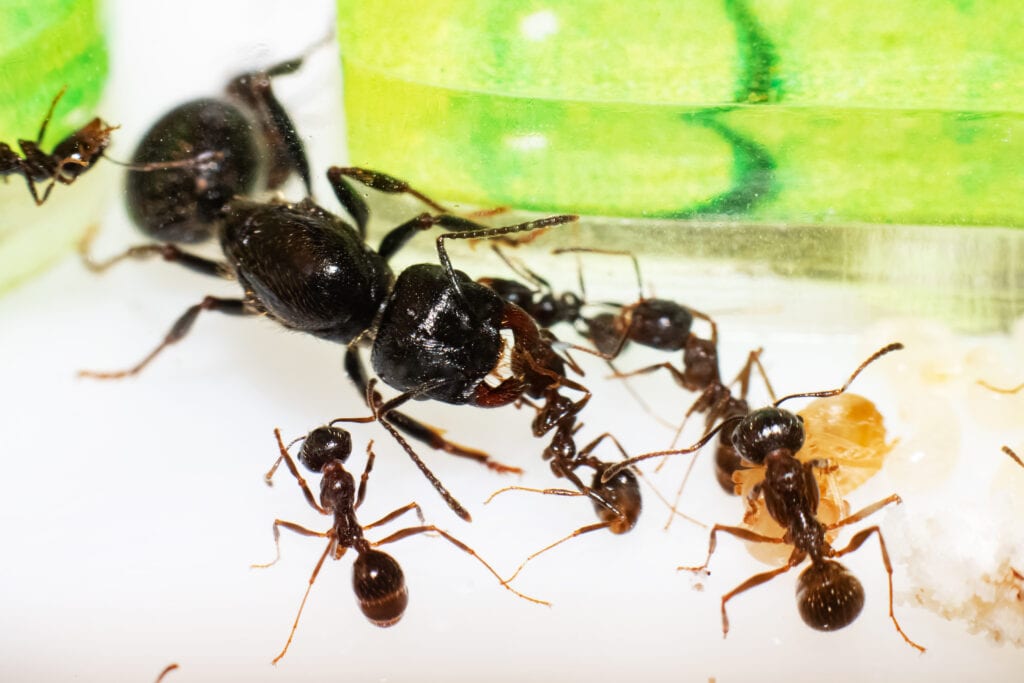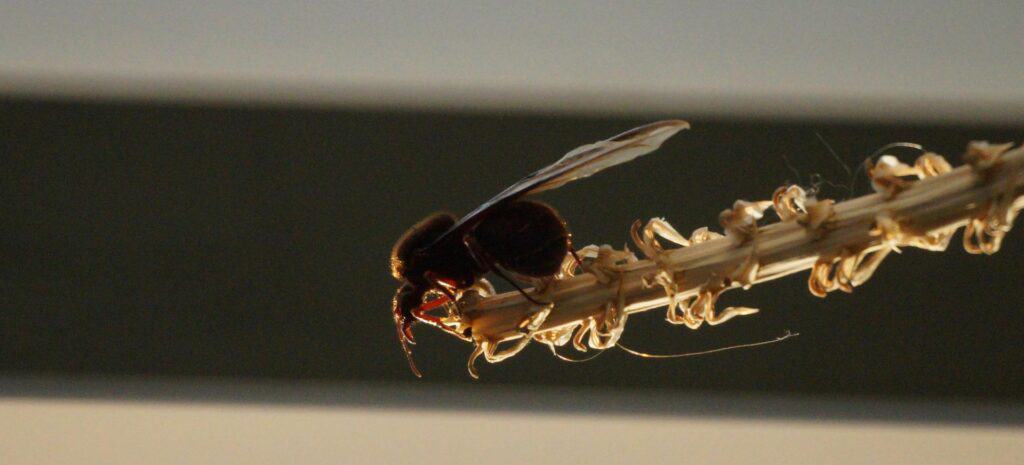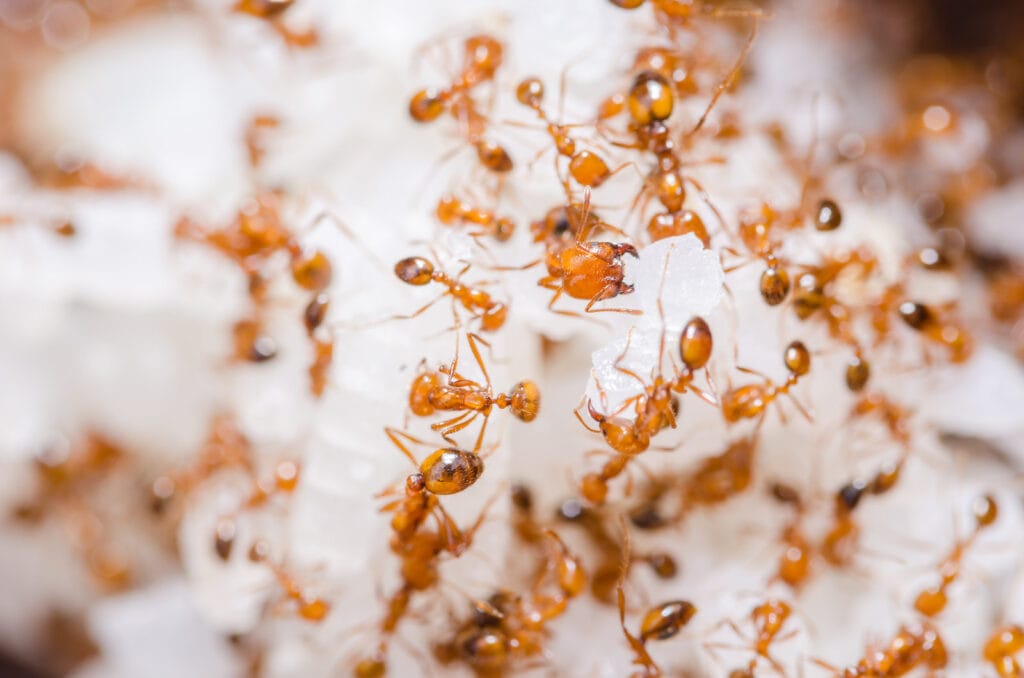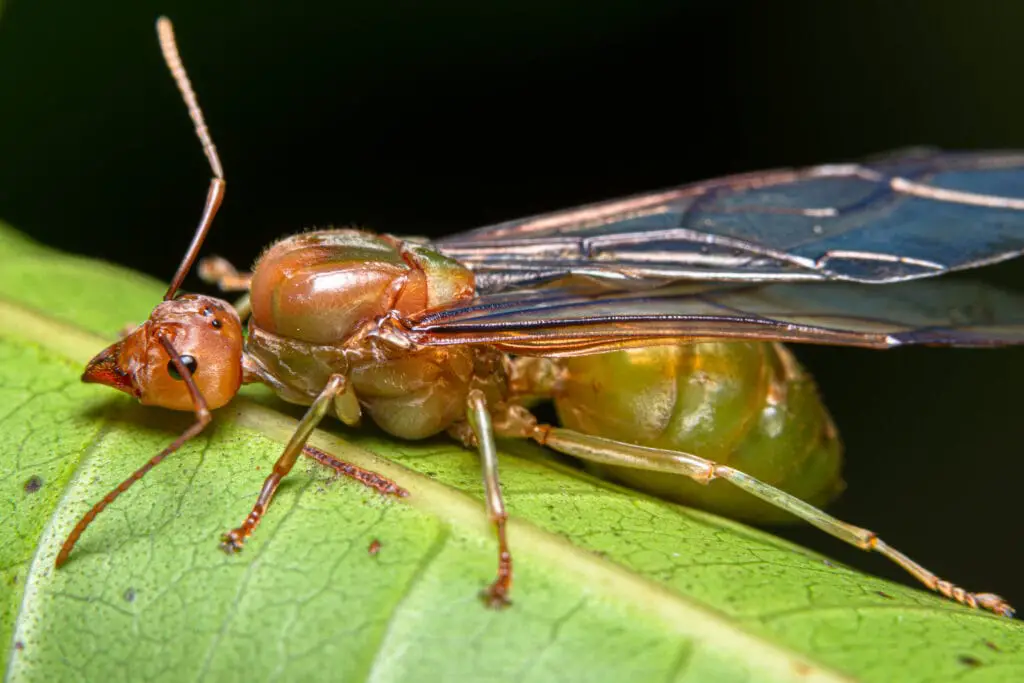If you’re like most people, you’re probably antsy (pun intended) to get your hands on an ant farm. And who can blame you?
They’re a great way to learn about the fascinating lives of ants while enjoying the different intricacies of a new species.
But one big question stands in your way: how do you actually catch a queen ant?
Fear not! This how-to guide is here to help.
So gather your supplies, and let’s get started.
How do you tell a Queen ant from other ants?
Most ant species have a caste system, commonly divided into three; ant queen, reproductive males, and infertile female worker ants. To start a colony, you need to identify a newly mated queen. An ant queen is larger and darker colored and sheds her wings after mating.
Below are some helpful tips for your queen-hunting adventure;
- Size – queens, are primarily larger than the other ants and have a bigger, rounded abdomen compared to the other body parts. The larger size of the stomach is crucial for egg-laying purposes. A queen also has a larger thorax which holds her wings during the phase she’s an alate.
- Winged then wingless – a mature ant nest will produce winged ants called alates. These unfertilized females use the wings during the mating flight. After mating, they shed their wings. When you catch a queen, look for wing muscles where the shed wings were attached. If your potential queen is tiny, use a magnifier to see the details more clearly.
- Queen walking behavior after mating – mated queens shed wings to start new colonies. After shedding wings, they walk on the ground exploring suitable nest areas. Preferred homes are under rocks, stones, or tree barks, where they hide to lay eggs. You can tell a mated queen if she’s erratically walking around trying to find a suitable place to make a nest.
You may also be wondering what happens to the males.

What Time of Year can you Find Queen Ants?
The best time of the year when it’s easiest to find and catch a queen is during their nuptial flights when they mate with male ants. Mating flights happen at different times in different states when winged ants called alates usually make mating flights.
Most species wait until the summer to embark on the nuptial flight.
The time males and alates fly varies depending on species, season, and the day’s weather.
Most nuptial flights happen on bright sunny, humid days, usually after a heavy summer or spring monsoon rainfall.
Which places can you find a queen ant?
When searching for a queen, your probability of finding one depends on the places you look. You can easily locate the queens walking on open grounds in the fields after nuptial flights, and Wingless mated queens walk and stop to sample patches of soil or cracks for nest suitability.
Look for queens running around on pavements, paths, or sidewalks in a sporadic manner.
You can identify and track queens during active mating flights as they fly.
Queens are not good flyers, and they’re slow and fly in long, wide arcs like beetles.
You may be unlucky trying to catch a queen after the nuptial flight, but you can still find her when she’s later in the colony founding stage.
Days or weeks after a mating flight, you can find new queens undergoing the founding stage.
Explore under the tiniest rocks, stones, tree barks, or logs.
You can also find queens in ant hills (not advised).
If you pursue this option, you must dig up and collect the dirt in a container.
Then sift through it until you locate the queen.
Be careful not to squish any queens.
If you explore an ant hill and find winged queens, don’t bother collecting them because, most likely, they’ve not mated yet.

Can I Find Queen Ants at night?
Most ant species fly during the day to mate. Thus, searching for queens is best in the daytime. Species such as the formicine (wood and mound ants), Carpenter ants, Pheidole (the big-headed ant), and Solenopsis (fire ants) have pre or post-dusk nuptial flights. Their queens can be captured at night.
Queen ants, like most insects, are attracted to UV light.
You can set up a light and lay a trap to capture them.
When using this technique, you can end up with hundreds of queens.
Select a few and release extra ones back to the fields.
Since different species will be indiscriminately attracted to the light, be careful to review which ant type the queen you have captured belongs to.
Look out for species like fire ants that sting. (Source)

How do I handle a queen ant after catching her?
The most recommended practice after catching a queen is to hold her in a test tube or a snap cap vial. Transparent containers help if you want to view her. Having a queen in an artificial environment is stressful for her; you shouldn’t bother her. Keep the containers/tubes in the dark under a towel.
Ensure the cotton balls sealing the containers are moist.
Most queens are fully claustral and do not feed when they are founding new colonies until the first workers hatch, and it’s not necessary to feed your queen.
After a few or some days depending on the species of your queen, the eggs she lays hatch to larva, pupae, then to the first batch of workers, have your ant farm ready, where you will transfer your queen to start a new colony.

Which tools do I need when searching for a queen ant?
Before embarking on a queen hunting day, prepare and carry the necessary tools. To store captured queens, carry test tubes or film canisters. Have some cotton balls to seal the container once you catch a queen. Some ants are very small. Have a magnifying glass to view and confirm features.
[amazon box=”B07D9HJ4XW”]Some nuptial flight queens may be infertile.
Carry several test tubes or snap cap vials to catch several queens in case some turn out infertile.
It may be necessary to dig up ant hills or moist soil to extract a queen from an existing colony.

Arm yourself with a shovel and containers to put the dirt in.
During transport, ensure the queen has enough water.
Have some water to soak the cotton ball before placing it in the test tube or film canister.
Some species, like the black ants, are very small, and thus hard to pick the queen using bare hands.
Investing in a human-powered mouth bug vacuum is an option; this tool helps suck small ants into the chamber super easily.
A pair of forceps come in handy when picking up ants. Have one.
[amazon box=”B081P93444″]
Do you need to catch many queens to start an ant colony?
When searching and catching queen ants during nuptial flights, it’s impossible to tell which one is fertile or not. At that point, it’s advisable to catch several. After a few days or weeks in their snap cap vial environments, depending on the species, the fertile ones will start laying eggs.
Assuming you were lucky and it turns out all your queens lay eggs, you need to decide if you want to keep all of them.
Most ant types are monogynous, and a colony needs only one queen.
Remaining with more than one egg-laying queen implies having several colonies, i.e., you need separate ant farms for each.
Managing a colony requires effort and commitment.
If you do not intend or plan to maintain more than one colony, release the unwanted queen(s) back to the field.
